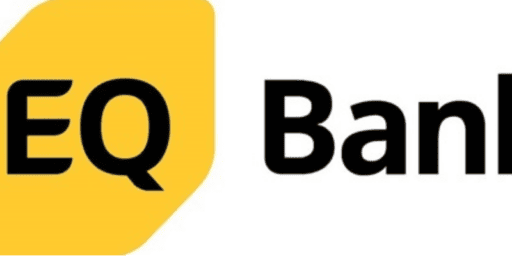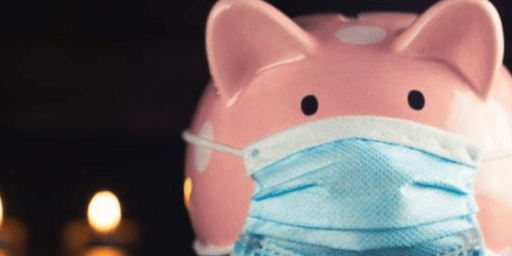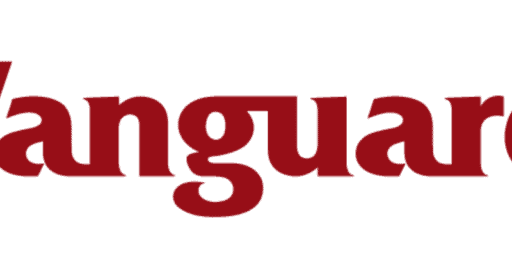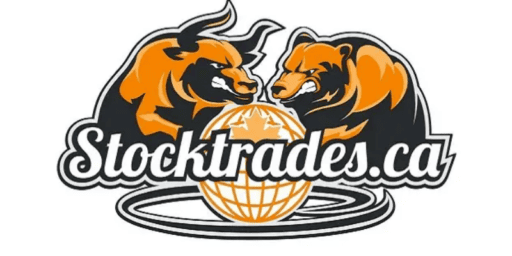Bond ETFs vs GICs vs High Interest Savings Accounts
For income-oriented Canadian investors the choice between a Bond (or Bond ETF), a GIC, or a high interest savings account has become more important than ever.
With interest rates at historic lows (for a little while longer anyway) choosing the best option for the “safe, low risk investing” part of our portfolio can make a big difference!
Read on to find our picks for the best Bond ETF, the best GIC rates in Canada, and our pick for top Canadian high interest savings account.
- Best Canada GIC Rates: EQ Bank
- Best Canada Bond ETF: ZAG (BMO Aggregate Bond Index ETF)
- Best Canadian High Interest Savings Account: EQ Bank
Canadian Bonds vs GIC vs High-Interest Savings Account Debate
Traditionally, when it comes to the “safe” portion of your portfolio, the default choice for many Canadians has been to buy a bond ETF. It’s quick, easy, and free with Qtrade – see our Qtrade Review for more information on free ETF trades.
The problem however, is that in the current environment, bonds generate very little yield for the risk that they possess, compared to other more secure options like GICs and high-interest savings accounts.
The other large negative with bonds is that their returns are not guaranteed. Also, when interest rates go up, we can expect our bonds to drop in value.
GICs and high-interest savings accounts don’t have this problem, and so the issue becomes: If we are taking on this interest rate risk by holding something like a bond ETF, then we at least want to be compensated for that extra level of risk (by receiving a higher yield).
If we are not going to be compensated for that risk, then why wouldn’t we instead hold something that is guaranteed like a GIC or a high-interest savings account?
Typically, GICs and high-interest savings accounts have CDIC insurance, which means you are covered if the bank was to default (among other things). Bonds are not included as part of this CDIC coverage.
Aside: Always make sure that your bank has this CDIC insurance before you use them. A good example is EQ Bank. I personally use this online moneysaver, and you can read my full EQ Bank Review to find out more about CDIC insurance and why I think they’re the best option in Canada.
Why is this Fixed Income so Important?
The reason that this debate is very relevant now, is that the yield that you’re receiving on a bond ETF is not always higher than the guaranteed interest that you could receive on a GIC or high-interest savings account instead.
For example, a very popular low-cost, index ETF in Canada that represents the Canadian bond market is ZAG. If you do your own research, you’ll see many financial writers have this as one of their top bond ETFs for Canadians.
While I too agree that this is a great ETF for the bond portion of our portfolio, at the time of this writing, it’s only generating a yield of 1.97% (looking at its “weighted average yield to maturity”).
Compare this to the best high interest savings accounts in Canada, some of which bring in a guaranteed just under 2%*.
Discover Canada’s Top Saving Accounts
Delve into our comprehensive comparison and analysis of the best alternatives for a Big Five bank in Canada.
In other words, you are taking on interest rate risk with a bond ETF, and are actually receiving a yield that is less than a guaranteed rate from a savings account.
What About Capital Gains In a Bond ETF?
A quick refresher for those of you that aren’t bond experts: Bond ETFs (and bonds in general) gain value when interest rates go down. The idea is, that the bond you hold that offers a higher interest rate than you can currently get is now more valuable right?
So sure, the interest rates could drop further and increase the value of our bonds beyond what a savings account can generate, but how likely is it that interest rates will continue to drop further (considering that we are already at historic lows and inflation is knocking on the door)?
And even if we refuse to speculate where interest rates are going, then it still comes down to the debate of:
Are you trying to maximize growth in the “safe” portion of your portfolio?
Or
Are you trying to maximize stability?
As most will agree, the purpose of the stock portion of the portfolio is to generate the growth, while the fixed income portion is for the stability.
With that in mind, why take on interest rate risk with the hope that interest rates continue to fall (thus increasing the value of your bonds), when you can instead get a higher yield from a place like EQ Bank that is actually guaranteed and backed by the Canadian government through CDIC insurance?
I’m definitely not saying that we should sell all our bond ETFs and have all our fixed-income money in high-interest savings accounts or GICs (Especially since some of these options aren’t even available within an RRSP and TFSA).
I do however think that we shouldn’t just blindly invest in bond ETFs, while ignoring the other investment vehicles that do provide a guarantee, and in some cases, even provide a higher yield than the traditional bond ETF.
Are There Other Advantages to Bonds?
One potential advantage of bonds is that when we do have a significant stock market decline, there is a chance that our bond ETFs will go up in value, helping offset some of those stock losses.
We can then rebalance, which will help us use some of the bond portion to purchase our stock ETFs at their temporarily depressed prices.
However, this relationship of bonds going up when stocks go down is also not guaranteed, as was the case in the 2008 financial crisis where both stocks and bonds dropped in value.
It should also be noted that if we want to rebalance, simply wiring some money from your high interest savings account to your online broker in order to purchase more stocks is pretty straightforward.
Bonds vs Best Canadian GIC Rates
You can see below that EQ Bank’s leading Canadian GIC rates compare quite favourably with a bond ETF such as ZAG (currently yielding 3.57%), making them an excellent option if you don’t mind sacrificing a bit of liquidity.
Term | Registered (TFSA & RRSP) GIC Rate | Non-Registered GIC Rate |
3 Months | 3.10% | 3.10% |
6 Months | 3.15% | 3.15% |
9 Months | 3.20% | 3.20% |
1 Year | 3.55% | 3.55% |
15 Months | 3.90% | 3.90% |
2 Years | 3.65% | 3.65% |
27 Months | 3.90% | 3.90% |
3 Years | 3.50% | 3.50% |
4 Years | 3.60% | 3.60% |
5 Years | 3.65% | 3.65% |
6 Years | 3.00% | 3.00% |
7 Years | 3.00% | 3.00% |
10 Years | 3.00% | 3.00% |
Diversifying Your Fixed Income
After interviewing dozens of financial planners and experts on my show (you can stream/download them all here), one recurring strategy that I hear recommended by financial planners is to diversify the sources of our fixed income.
For example, instead of having all our money in either stocks and bonds, we can instead diversify our fixed income sources. For instance, having a portion of our fixed income in a bond ETF, a portion in GICs, and a portion in a high-interest savings accounts.
This way, we are not fully subject to the volatility and lack of guaranteed returns from bonds, but still have some skin in the game to use bonds as a diversification tool to help us with the rebalancing when the stock market undergoes corrections in the future.
Canada Government Bonds vs Canadian Corporate Bonds
Most of the time when we talk about bonds, we’re referring to bonds from governments around the world. Usually the bonds that we’ll find in most bond ETFs are known as “investment grade”.
That means that independent bond rating agencies have decided that on their scale of AAA to D, the bonds rate at least a BBB rating. Above that rating is called “investment grade”, below that rating is known as “junk bonds”.
Obviously the more likely a government or corporation is to not pay their bondholders back (also known as “defaulting on their debt”) the higher interest rate they will have to pay on the bond in order to entice folks to lend them money.
Generally, the governments of big stable countries like Canada, the USA, Germany, etc., have AAA-rated bonds. Very strong, stable companies such as Johnson & Johnson also have AAA-rate bonds. Slightly less strong companies like RBC have AA-rated bonds (still very high investment grade).
Provincial governments also have their bonds rated by the ratings agencies. They range from BC having a AAA rating to Newfoundland having an A rating.
Ultimately, bond experts don’t really distinguish much between government bonds (you can even find municipal-government bonds in Canada – although they’re more popular in the USA) and corporate bonds. Their job is simply to assess the overall risk that money won’t be paid to bondholders.
Generally corporate debt is seen as more risky than government debt, but that’s a very broad generalization. For example, a logical persona will quickly deduce that Johnson & Johnson or RBC are much more likely to pay their bondholders (almost certain) than Argentina’s government be (very shaky).
You can check out our article on the Best ETFs in Canada to see why bond ETFs are by far the best way to get diversified fixed-income exposure (as opposed to buying traditional bonds one at a time). By purchasing one unit of ZAG, you’re getting access to the entire Canadian bond market.
Roughly a third of your money will go to Canadian federal government bonds, a third to provincial government bonds, and then a third to corporate and municipal bonds. About 75% of the bonds are AA or AAA rated, with the rest being A or BBB (so all would be considered investment grade bonds).
Canada Corporate Bonds vs Preferred Shares vs Common Shares
The vast majority of Canadian investors will never have to worry about preferred shares, but they are an interesting mix of attributes borrowed from both bonds and common shares. If you think of bonds and common shares of opposite ends of the risk continuum, preferred shares fall somewhere in the middle.
The basic idea is that if a company declares bankruptcy, those with preferred shares will get some of their investment money paid back to them before common shareholders do – but after bondholders do. It’s also notable that for most preferred shares, the company guarantees a fixed dividend (whereas common share dividends can be cut), and that the company can buy back the preferred shares if the stock price hits a certain higher level.
Traditionally, we would say this means that preferred shares have a “lower investment ceiling.” While voting rights aren’t a big deal to most folks sitting at home investing in their brokerage account, your financial textbook will tell you that usually common shares have voting rights whereas preferred shares do not.
All in all, I’d say the main takeaway for most investors when it comes to bonds vs preferred shares vs common shares is that in the bonds vs preferred shares vs common shares debate, that preferred shares are more risky than bonds, but less risky than common shares – or “common stock”.
Consequently, their long-term returns are likely to be higher than bonds, but lower than common stock.
Some investing gurus out there recommend using preferred shares to boost yield for income-hungry investors. I personally think that most investors are best off just keeping it simple with dividend stocks or all-in-one ETFs when it comes to the equity portion of their portfolios.
Real-Life Applications: Accumulation Phase vs Early Retirement
When it comes to the fixed income portion of your portfolio, the composition should vary depending on what stage you are at within your financial independence / early-retirement journey.
Let’s take a look at each one:
Fixed Income During the Accumulation Phase:
When you are still working and saving as much as possible, I suggest keeping your fixed income as low as possible, and maximizing your equity exposure up to the point that you feel comfortable.
There are some great free questionnaires that can help you in determining how much equity you should take on, such as this one by Vanguard.
Here are my thoughts on the three investment vehicles that we discussed, specifically for this phase in your financial independence journey:
Bonds ETFs
Keep them as low as you can handle, but not so low that you panic sell when we have the next major recession (i.e. If you’re 100% stocks, can you handle a 40%+ decline in your portfolio?).
Remember to buy them through a discount brokerage that lets you buy them without any commissions. MDJ recommends Qtrade because they let you buy and sell ETFs without commissions, as opposed to paying $5 to $10 per trade through many of the banks.
The $5 to $10 per trade may sound trivial to some, but if you’re buying 4 ETFs every month using a portion of your latest paycheque, then that’s an extra $20 to $40 that you’re spending every month on something that you could be getting for free from one of Canada’s best online brokerages.
GICs
I rarely see a use for these during the accumulation phase, unless you know that you have a big expense or cash outflow coming up, and you need that money safe and guaranteed while maximizing the interest rate that you receive.
Often you’ll find the interest rate you get on a GIC to be higher than what you get in a high-interest savings account, but the downside is that you can’t take out the money for the term that you agree to.
Personally, I prefer using a high-interest savings account instead of a GIC because I want my cash always available for day-to-day spending, and financial emergencies rarely come up when we expect them to, so we don’t want that money locked away and unavailable when we need it most.
High-Interest Savings Accounts
This is what you’ll be using for your emergency fund. The most common timeframe that many experts suggest is six months of living expenses.
I like this being large enough so that if you lose your job, you never feel rushed to accept a job that you don’t really want because you need the money.
In addition to this amount being large enough to supplement your income if you were to lose your job, you also want it large enough to cover any large expenses that you foresee occurring in the next year. For example, a roof replacement, car replacement, etc.
Financial Independence/Retirement Phase:
While there is no one single best way to structure fixed income in this phase, it is here that you can really maximize the use of all three of these investment vehicles.
Once we hit our financial independence number, I found that the ‘bucket strategy’ gave me the most peace of mind, while the markets continued their never-ending turbulence.
While there is nothing wrong with a “total portfolio” approach in retirement (where you don’t segment your portfolio into buckets and instead just withdraw a fixed percentage or predetermined amount), I found it made me a lot less nervous knowing that I had a piece of my portfolio in safe and guaranteed investment so that we would be fine, even if we hit another 2008-style Financial Crisis shortly after retiring.
There are many different variations of the bucket strategy, and it’s worthwhile working with a fee-for-service financial planner to have one that is custom-tailored to your specific situation.
But, one that I personally settled on before my wife and I quit our day jobs, is to have five years of expenses secured in guaranteed investments. I chose 5 years, because historically, it has taken around that (or less) for the stock markets to fully recover after a major downturn.
To be a little bit more aggressive, I calculated a conservative amount of interest and dividends that we can expect to receive over those five years (even if we hit a major recession), and subtracted that from the five year cash cushion requirement.
In that five year cushion requirement, I also subtracted a very conservative amount that I expect to receive from other side income projects that I do for fun.
I found that knowing that I don’t have to touch my equities for five years gave me the piece-of-mind I needed to not be constantly thinking about the markets, once we quit our jobs and didn’t have those reliable paycheques from an employer coming in every two weeks.
In terms of structuring this, one strategy that I liked is having 1-2 years in a high-interest savings account (I currently use EQ Bank due to the high interest rate on their EQ Bank savings plus account), and then having years 3-5 in either a GIC, a high-interest savings account, or a combination of the two.
Another more conservative strategy that I’ve seen is to:
- Have years 1-2 of expenses in a high-interest savings account.
- Years 3-5 in a GIC ladder. You won’t need that money for several years so it can make sense to lock it in at a higher rate than what a savings account can offer.
- Have enough in bond ETFs to cover expenses from years 6-10.
- Put the remaining into low-cost index ETFs that track the equity markets (i.e. S&P 500, S&P/TSX, etc.)
I once thought that there was one correct way to structure it all. However, after interviewing many financial planners on my show, I quickly learned that while it’s great to have an understanding of how others do it, you do need to be willing to make the necessary tweaks so that you feel comfortable in your own financial independence/retirement journey. After all, not everybody has the same risk tolerance, lifestyle ambitions, income opportunities and expenses.
I know that Kyle disagrees with this approach from a math standpoint, in that going 90-100% equities without “buckets” of short term income actually gives you better odds of not running out of money than trying to prepare for a worst case scenario gives you.
The potential problem there of course is that most people aren’t built to psychologically deal with the massive ups and downs (especially during retirement) of a highly volatile portfolio like that.
Is there a type of structure that you think would work better for you? Are there any pros or cons that you think I missed? Let us know in the comments.
Looking for more to read? Check out Kyle’s article on The Ultimate Guide to Safe Withdrawal Rates.
*Interest is calculated daily on the total closing balance and paid monthly. Rates are per annum and subject to change without notice.
I've Completed My Million Dollar Journey. Let Me Guide You Through Yours!
Sign up below to get a copy of our free eBook: Can I Retire Yet?











Love the idea of 5 years of guaranteed income. We use this with clients all the time. Only caveat on the HISA with EQ Bank is that the rate is subject to change. It’s a higher rate relative to the market and I wouldn’t be surprised to see it reduced over time. So we try and do a 6 year ladder, with 1/6 of money in HISA, then 1-6 laddered 1-5 years in GICs. Year to year, decide if you want to replace income based on stock market performance.
I personally chose to go with a combination of 50% “permanent portfolio” and the other 50% 60/40 equities/bonds (it seemed a bit too much to put 25% in cash or gold, that’s why I chose this approach).
Thus I have 12.5% in CSAV, 12.5% in physical gold, 12.5%+20% bonds, 12.5% in Canadian equities and the rest of 30% divided evenly between emerging markets, US and EAFE equities.
I got a steady 5-6% return over the last 5 years and never lost a night’s sleep worrying about loss of capital.
Our fixed income was locked in time. It was waiting for us when we got to the future.
In the years running up to retirement (we’re not quite there yet), almost all employment earnings earmarked for retirement went into bonds and cash/GICs. Over three to four years our portfolio went from 90/10 to 70/30. The gamble was that I wouldn’t find myself unemployed and unemployable, or unable to work for medical reasons or something similar.
This approach meant that we could get all of our money into the markets ASAP, while convincing myself that I really did have a 70/30 portfolio, which I did – the fixed income portion was just locked away in the future, like a 5 year GIC. It was just a matter of time [and staying employed].
On the drive home I realized that I’d actually started with a portfolio of 0/100! As time past by, and I purchased stocks, I progressed through a 50/50 portfolio to arrive at 70/30 today.
Using round numbers: I had a target of $1M in 15 years, to be made up of $700K equities and $300K fixed income. On day one I knew that I had $300K of fixed income in the bank already (locked in the future), by year 10 I had $600K in equities, over the next five years I collected my fixed income as it matured (i.e. I got paid), and at the 15 year point, with growth in my equities, I ended up with a $1M 70/30 portfolio.